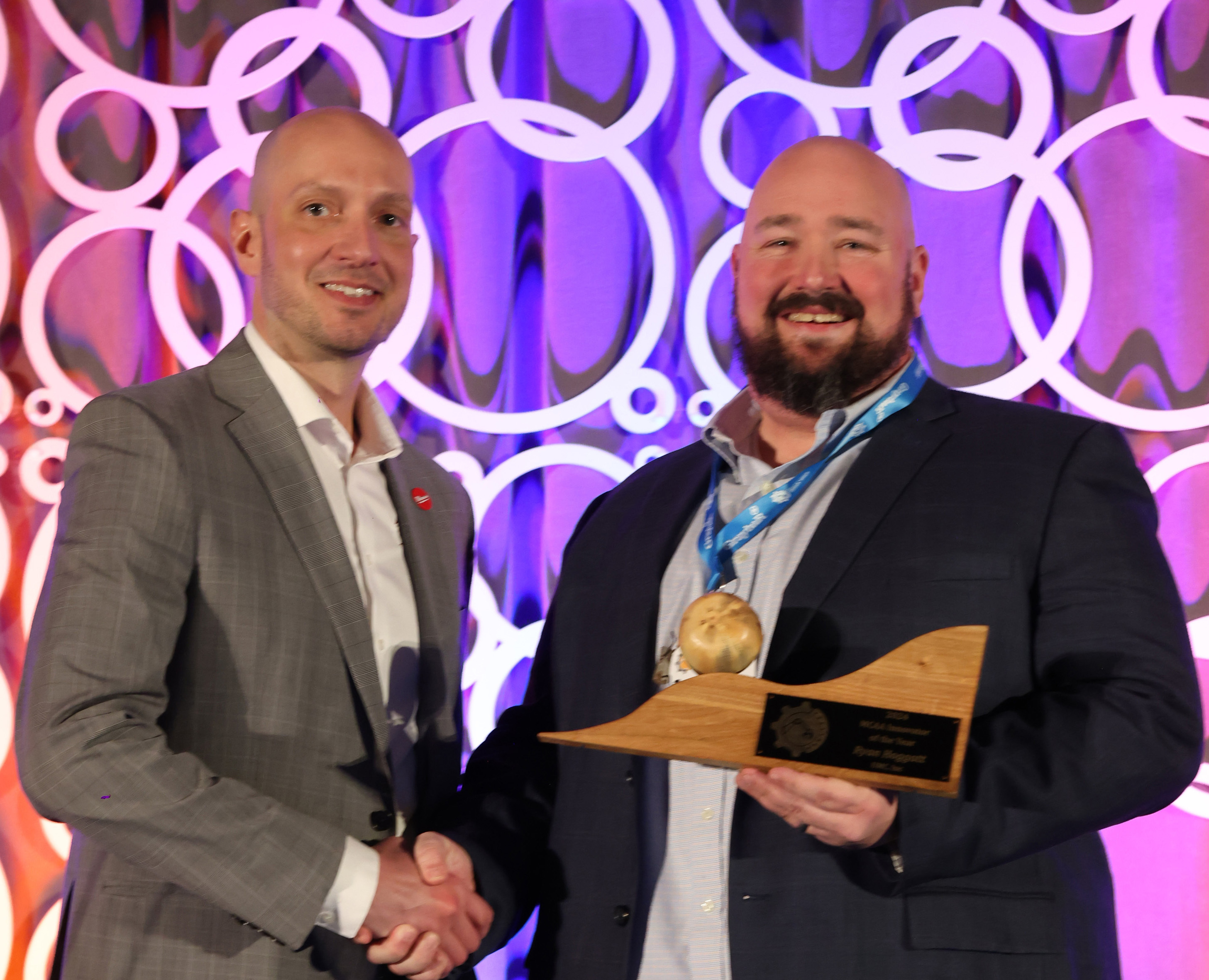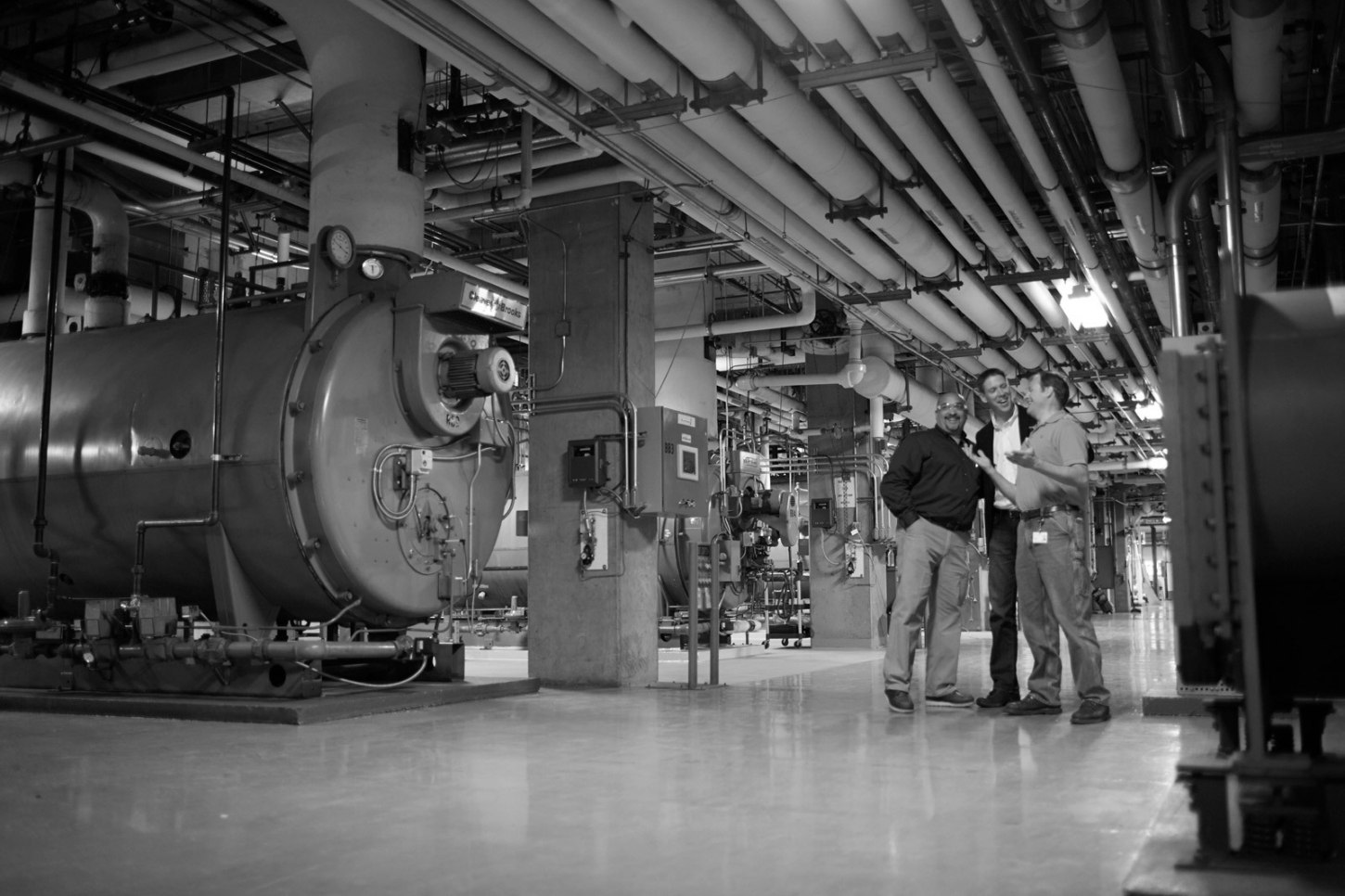Originally featured in PHC News April 2024 edition. Authored by Steve Smith. Click HERE to read the full article.
UMC’s Manufacturing Mindset
Innovation on full display throughout contractor’s well-planned 95,000-square-foot production facility.

We didn’t know what a rock star Ryan Hoggatt, director of manufacturing, UMC Inc., was when we first met him over a Zoom call toward the end of last year. We wanted to know more about how the mechanical contractor consolidated three separate buildings into one new 95,000-square-foot manufacturing facility that opened in August 2022.
“We spent a lot of time and effort beforehand,” Hoggatt told us, “even hiring an industrial engineer to analyze the workflow of the shop and help us plan and stage the new shop. That’s not something most contractors will do.”
Innovation Leader
But before we even had time to review our notes from that conversation, we read the news that MCAA had named Hoggatt its 2024 MEP Innovator of the Year at the trade group’s MEP Innovation Conference last January in Orlando.
Hoggatt was cited for his contributions in revolutionizing construction practices, much of which is on full display at UMC’s thoroughly planned-out manufacturing facility.
“The ownership team at UMC has been very supportive of new and innovative ideas,” says Steve Brooks, president, UMC, a 104-year-old mechanical contractor based in Lynnwood, Wash., in a YouTube created to celebrate Hoggatt’s leadership award, “whether that be from investing in our new manufacturing shop, whether it be from bringing on some people from maybe some different industries to bring new and different ideas to how we can approach innovation.”
Hoggatt joined UMC in 2008 and has been working to standardize systems and streamline processes while ensuring quality and safety for UMC’s prefab and modular operations over much of his career at one of the largest design-build contractors based in the Pacific Northwest.
“Ryan brings with him the ability to really push the envelope on what we can do offsite in our fab shop,” Brooks adds. “He challenges our status quo. He encourages people to try new things, and as a real leader in our organization as far as how we want to make our workforce better and how we can deliver our projects.”

New Digs
The new facility, which also incorporates office space, contains about 80,000 square feet of manufacturing space with practically every inch optimized for the company’s prefab and modular construction operations. From the warehouse racks marked with QR codes and tracked into UMC’s supply chain management system to an automated pallet wrapper that significantly improves the company’s delivery process, every stop along the way has been rethought.
“We got a blank canvas when we designed the new facility,” Hoggatt explains. “We really focused on the throughput of our work, from the point we order raw goods, receive the raw goods, through all the processing steps and to finished goods shipped to a jobsite.”
Up until the move, UMC was operating three separate facilities totaling about 55,000 square feet located close to each other near the headquarters campus. One was for modular and plumbing fabrication; another for miscellaneous metals and piping fabrication; and the last for warehousing.
The new consolidated shop is located in Everett about 15 miles from the company’s HQ with operations all under one roof to support and pivot UMC’s manufacturing operations to better serve its clients’ needs as those needs adapt and grow with the market.
Throughout the building, there is visual signage, T-8 lighting, and 24-foot clear ceiling height in the warehouse and shop floors.
The shipping and receiving areas feature 27 high dock doors to facilitate seamless loading and unloading as well as 11 grade-level doors to simplify material movement via carts and forklifts.
The shop floor not only consists of expanded piping and plumbing fabrication and storage space, but advanced tool rental and storage and even a dedicated space for Fastenal services.
The fabrication area includes improved exhaust ventilation over the Watts Plasma table and a large off-feed piping accumulation table at the cutting operation stations. The cutting station has an impressive cutting envelope making the table ideal for UMC’s typical project scale and is capable of extreme precision and reduces or eliminates the need for secondary measures.
The shop also has six one-ton derrick cranes and a dual three-ton bridge crane, which enables UMC to carry out heavier jobs safely and fills a market need for large-quantity fabrication.
Manufacturing Approach
“Our overall idea for the new facility was to limit the number of times we touch an item,” Hoggatt explains. “Of course, we have to touch plumbing and piping to cut it and if we touch it again to fit it, that’s fine; we’re adding value to the process.”
It’s all those many other touches that aren’t doing anyone any good.
“If I have to pick it up to move it to a cart,” he adds, “I’m probably going to end up picking it up another time to move it to another different cart. That’s not making us money. In fact, we’re losing money on all those unnecessary touches.”
The custom-built pipe accumulation table is a perfect example of this approach.
“After end-cutting or saddling, the off-feed smoothly pushes the pipe along the table, which has plenty of space to store them,” Hoggatt explains. “This means we now handle the pipe much less – from 14 touchpoints down to less than four. The table can even hold a whole package of material at once. Plus, with foot pedals at each end and in the middle, rotating the pipe is super easy and doesn’t require any manual effort.”
While cutting down on the touchpoints makes a difference to efficiency, the process makes operations that much safer.
“Every extra touch at this stage at the old shop, since we were often elevating pipe, meant a potential safety risk,” Hoggatt adds. “The new setup is also ergonomically better for the person doing it. Now it rolls on a roller table and we can move pipe very efficiently.”
Beyond the accumulation table, Hoggatt outlined a number of other highlights for us, which is exactly what 330 other contractors got a chance to see first-hand at last year’s MCAA Fabrication Conference. (For more on this and to plan for this year’s conference, see our sidebar.)
Here are just some snapshots of the features at the new shop:
Tool Room: At 3,000 square feet, the new tool room is nearly double the size of the old one. A dedicated staff handles organization, purchases, repairs, and cleaning, ensuring tools are always in excellent condition. If a required tool is unavailable, they assist with rentals and consider purchasing it for future field use.
“We’ve set up the room on a min/max system,” Hoggatt explains. “Tools that we use the most are kept at a minimum distance from fulfillment. Conversely, one-off tools that we know someone someday will need are kept in the back. The staff handles everything from a socket set to an HDPE fusion machine for underground water lines.”
Fastenal Cage: This is essentially a Fastenal store staffed by Fastenal employees, located inside the manufacturing facility. It stocks the essentials and simplifies purchases.
“It’s a Fastenal store,” Hoggatt explains, “but with only the material we buy. Plus, it has consumables, such as hard hats and vests, that are already branded for us, which dramatically cuts down our fulfillment time.”
A vending machine also makes quick work of buying smaller tools and hardware. Fastenal employees are alerted for restocking when any supplies run low.
“We want our foremen managing workflow, not ordering material,” Hoggatt says, “or wondering how many grinding discs or how much welding wire we have in stock.”
Weld Cells: These stations feature fit-up tables with two positioners each, allowing simultaneous welding and preparation. The workflow is driven by a Stratus system, supported by mobile computer stations. Various tools and equipment, along with rolling stations, enhance organization and efficiency. The area includes cranes for lifting and a transition area for mechanical assembly and final packaging.
Carts: In-house 2’x4’ carts boast 1-ton lifting eye capacity, ensuring ease of use. Fish tubs come with forklift pockets, perfect for smaller spools, while ratchet straps keep items secure. Finally, an elevator cart efficiently loads long lengths of pipe.
Plumbing Drain and Carrier Fabrication: These fabrication tables are interconnected and equipped with mechanical lifting tables operated with foot pedals, creating an efficient assembly station.
“The carriers are mounted on the table with precise center-to-center dimensions to maintain accuracy,” Hoggatt adds. “Once completed, legs are attached to the assembly, and it’s lifted off the table, rolled onto the truck and into the building.”
Pallett Wrapper: We mentioned this at the top of our feature and, honestly, it wasn’t an item we figured we’d be talking with Hoggatt about.

However, while the new system may be one of the last steps in the shop, it is a big step toward both efficiency and safety.
“That used to be me on the shop floor,” Hoggatt says. “I can’t tell you how many times we did it the old way with a forklift lifting up a pallet to about shoulder height and then me and one other person wrapping it by hand. It was super slow and not necessarily the safest way to do this.”
With the new system in place, a single worker can accomplish the job.
Although our feature focuses on the work done on the shop floor, behind the scenes, UMC has all the indispensable tech and procedures in place for the virtual construction service team and all other operations such as purchasing, back orders, and shipping and receiving.
“I think we’ve done a great job with the new facility by getting rid of any constraints we may have had,” Hoggatt says. “We’ve always had world-class fabricators, but now we have everything in place that removes any bottlenecks and helps them move all their work in one direction.”
Questions or Comments?
For media inquiries or related questions, please contact info@umci.com
